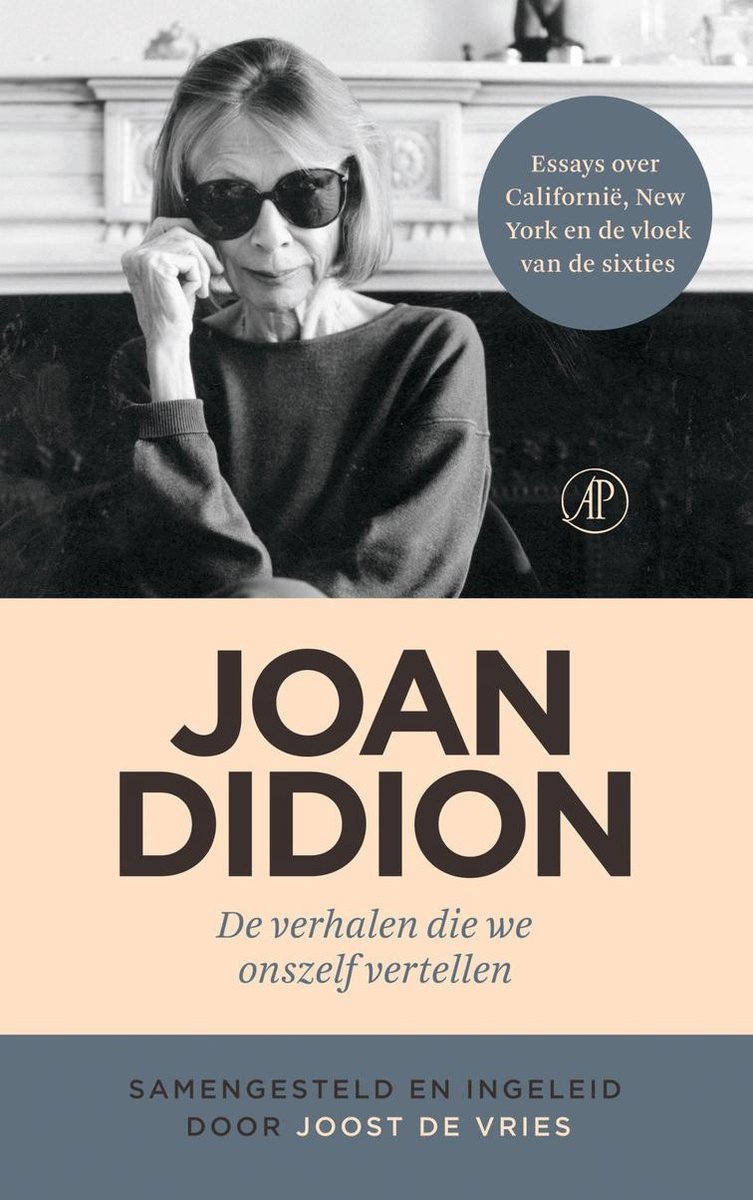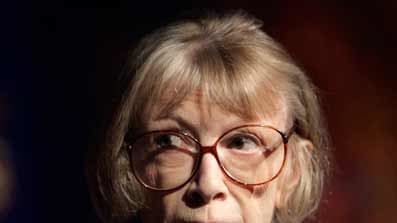.Joan Didion’.s new book, Blue Nights (Knopf), is a memoir of her daughter, Quintana Roo Dunne, who died in 2005 at age 39. Like The Year of Magical Thinking (which followed the loss of her. I finished Joan Didion's acclaimed memoir in the summer, but didn't write a review. By now, you know what it's about: the sudden death, in 2003, of Didion's husband and frequent literary collaborator, John Gregory Dunne, which happened while their daughter, Quintana, was hospitalized with pneumonia and then septic shock. Joan Didion was born in California and lives in New York City. She is the author of five novels and seven previous books of nonfiction. Joan Didion's Where I Was From, Political Fictions, The Last Thing He Wanted, After Henry, Miami, Democracy, Salvador, A Book of Common Prayer, and Run River are available in Vintage paperback. Blue Nights is a memoir by Joan Didion, written after Didion’s daughter died of cancer at age 39. The book’s main focus is Didion’s relationship with her daughter, but it also addresses the author's own childhood and offers some very frank thoughts on old age and mortality in general.

NPR’s sites use cookies, similar tracking and storage technologies, and information about the device you use to access our sites (together, “cookies”) to enhance your viewing, listening and user experience, personalize content, personalize messages from NPR’s sponsors, provide social media features, and analyze NPR’s traffic. This information is shared with social media, sponsorship, analytics, and other vendors or service providers. See details.
You may click on “Your Choices” below to learn about and use cookie management tools to limit use of cookies when you visit NPR’s sites. You can adjust your cookie choices in those tools at any time. If you click “Agree and Continue” below, you acknowledge that your cookie choices in those tools will be respected and that you otherwise agree to the use of cookies on NPR’s sites.

| Author | Joan Didion |
|---|---|
| Country | United States |
| Language | English |
| Genre | Memoir |
| Published | 2011 Alfred A. Knopf |
| Media type | Print (hardcover & paperback) |
| Pages | 208 |
| ISBN | 978-0307267672 |
Blue Nights is a memoir written by American authorJoan Didion, first published in 2011. The memoir is an account of the death of Didion's daughter, Quintana, who died in 2005 at age 39. Didion also discusses her own feelings on parenthood and aging. The title refers to certain times in the 'summer solstice [...] when the twilights turn long and blue.'[1]Blue Nights is notable for its 'nihilistic'[2] attitude towards grief as Didion offers little understanding or explanation of her daughter's death. Writing for The New York Review of Books, Cathleen Schine said,
'We tell ourselves stories in order to live,' Didion famously wrote in The White Album. Blue Nights is about what happens when there are no more stories we can tell ourselves, no narrative to guide us and make sense out of the chaos, no order, no meaning, no conclusion to the tale.'[3]
Blue Nights has been called a 'companion piece'[4] to Didion's The Year of Magical Thinking, published in 2005, which focuses on Didion's experiences following the death of her husband and hospitalization of her daughter.
Style[edit]
Unlike some other memoirs, including Didion's previous work, Blue Nights does not follow a conventional narrative path. Didion's writing is repetitive and nonlinear, reflecting the difficult process of coping with her daughter's death.[5] Didion frequently diverges from the subject of her daughter and often discusses her own life and feelings. Quintana's 'fleeting presence'[4] in the book can be said to illustrate the difficulty of coping with a child's death. Other critics believe it demonstrates Didion's 'lack of humility,'[5] a quality she has been criticized for as 'a perennial insider' for her own contributions, or lack of, towards her daughter's decline.[4]
Background[edit]
On New Year's weekend of 1966, Joan's friend Diana Lynn brought up the conversation of adoption. Joan and John were struggling to have a child of their own, and Diana gave them the name of the doctor who had delivered her own adopted children.[6] In the early hours of March 3, 1966, Joan and John received a call from that same doctor stating that he had just delivered a baby girl and needed to know whether or not they wanted her. An hour later Joan and John stood outside the nursery with no question, this baby was going to be theirs.[7] During her early years, Quintana struggled with the knowledge of her adoption. Quintana could be heard questioning what would have happened should John not have picked up the phone on March 3, 1966 or if there had been an accident on the freeway on their way to pick her up.
Quintana during her early years had a multitude of diagnoses for her anxiety and depression, which were all guesses at the time. It was not until her adult life that a doctor diagnosed her with 'borderline personality disorder.'[6] The symptoms of such a diagnosis were apparent in Quintana's character. Joan had witnessed theses effects: 'I had seen the charm, I had seen the composure, I had seen the suicidal despair.'[6] With all the confusion surrounding her mental state, Quintana would spend her early adult life self medicating with alcohol. This addiction led her to meet her bartender husband, Gerald Brian Michael. On July 26, 2003 Quintana married Gerry in the Cathedral of St. John the Divine on Amsterdam Avenue.

On December 24, 2003, Quintana was admitted to the emergency room with flu-like symptoms. Her illness, which had seemed routine, would soon become life-threatening.[7] To the surprise of everyone, it was Joan's husband John who died of a heart attack on December 30, 2003.[8] The funeral would have to wait until Quintana was strong enough to attend. Afterwards, Quintana had planned a trip to Los Angeles whereupon she fell and hit her head exiting the airport. Two years of recovery would not suffice; her injury coupled with her multiple illness would lead to her death on August 26, 2005.[7]
Joan Didion Memoir Made Into A Play

The memoir Blue Nights deals not with Quintana's illnesses or her death, but rather with Joan's mourning process. The memoir covers the timeline of Quintana's life via Joan's understanding of it. Joan, in the novel, struggles to come to terms with her mothering of Quintana. Joan questions whether she lived up to the title of mother, and whether Quintana would agree.
Reception[edit]
Joan Didion Memoir 2011
Following the release of this memoir in 2011, many critics agreed that Joan's style had become more reflective. In a New York Times review, John Banville stated that Joan's style changed after the memoir that focused on the death of her husband, A Year of Magical Thinking. Banville states that Joan, having not been able to find an outlet for her grief following the unexpected death of her husband, began to write The Year of Magical Thinking as her way of mourning her late husband John. With Quintana's death, Joan takes much longer to compile her thoughts in a way that she wants them represented. After writing the initial drafts, Joan rewrites in order to make that turn from cold journalistic reporting to more emotional reflection.[9] Joan's struggle to express her grief is explicated by critic Rachel Cusk, from The Guardian: Cusk states, 'Blue Nights is in a sense the manifestation of this frailty, the dwindling and fading of the artist's ability to create order out of randomness and chaos of experience'.[10] Other critics such as Hellar McAlpin, from The Washington Post, focus more on the impact of the stylistic choices made by Didion, describing the book as 'a beautiful condolence note to humanity about some of the painful realities of the human condition that deserves to be painted on traditional black-boarded mourning stationary'.[11]
Joan Didion Bio
References[edit]
- ^Didion, Joan. Blue Nights. p 3.
- ^O'Rourke, Meghan. 'Joan Didion’s Blue Nights isn’t about grieving for her daughter. It’s about a mother’s regrets.'Slate. Accessed November 5, 2014.
- ^Schine, Cathleen. 'Elegy to the Void.'The New York Review of Books. Accessed November 5, 2014.
- ^ abcBanville, John. Book review.The New York Times. Accessed November 5, 2014.
- ^ abCusk, Rachel. Book review.The Guardian. Accessed November 5, 2014.
- ^ abcDidion, Joan (2012). Blue Nights. New York City, NY: Knopf Doubleday Publishing Group. ISBN9780307387387.
- ^ abcJoan Didion, The Center Will Not Hold. Dunne, Griffin, Netflix, 2017.
- ^'John Gregory Dunne', Wikipedia, 2020-02-06, retrieved 2020-04-16
- ^Banville, John (2011-11-03). 'Joan Didion Mourns Her Daughter'. The New York Times. ISSN0362-4331. Retrieved 2020-04-17.
- ^Cusk, Rachel (2011-11-11). 'Blue Nights by Joan Didion – review'. The Guardian. ISSN0261-3077. Retrieved 2020-04-17.
- ^McAlpin, Heller (2011-11-11). ''Blue Nights' by Joan Didion'. Washington Post. ISSN0190-8286. Retrieved 2020-04-17.
Joan Didion Memoir
